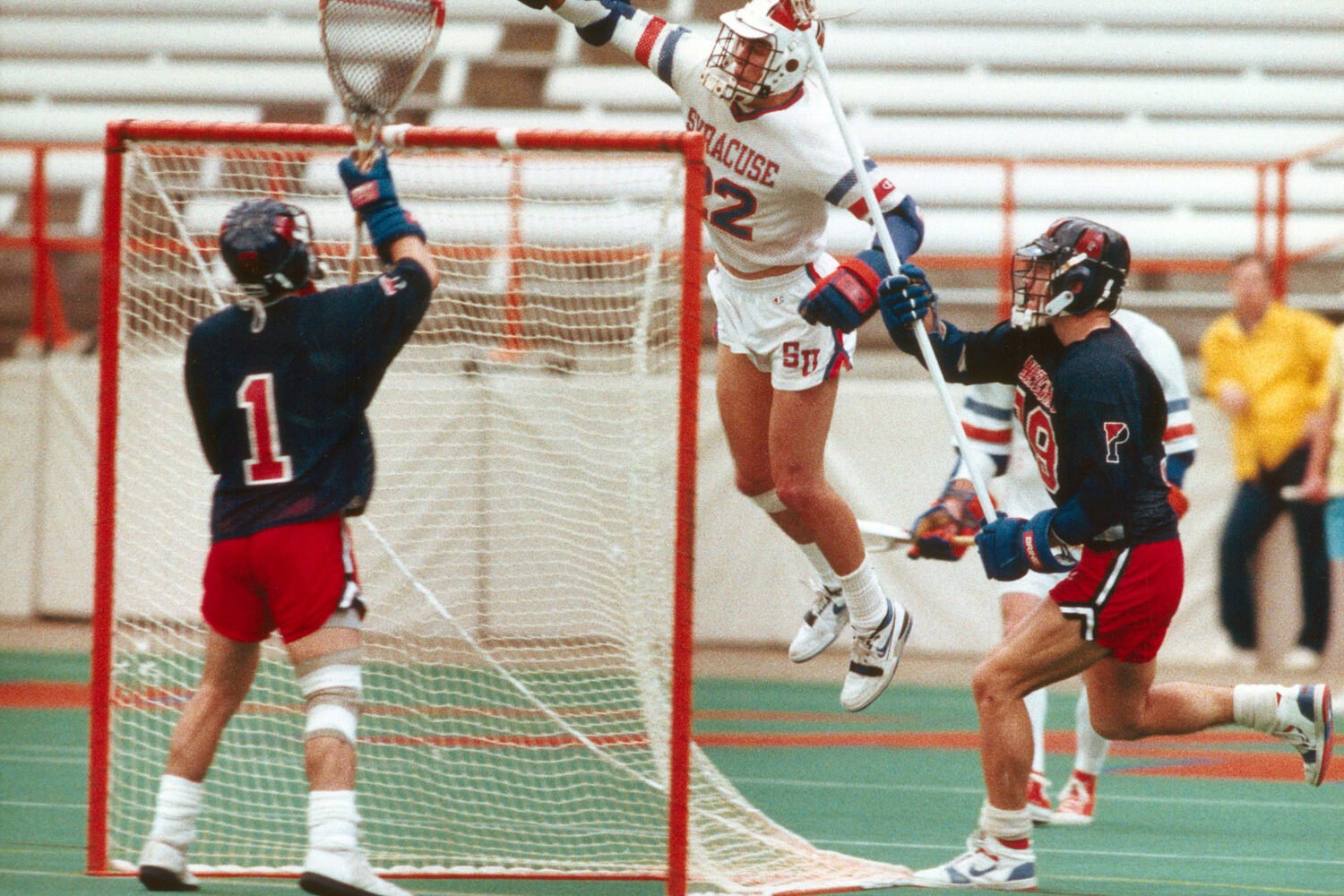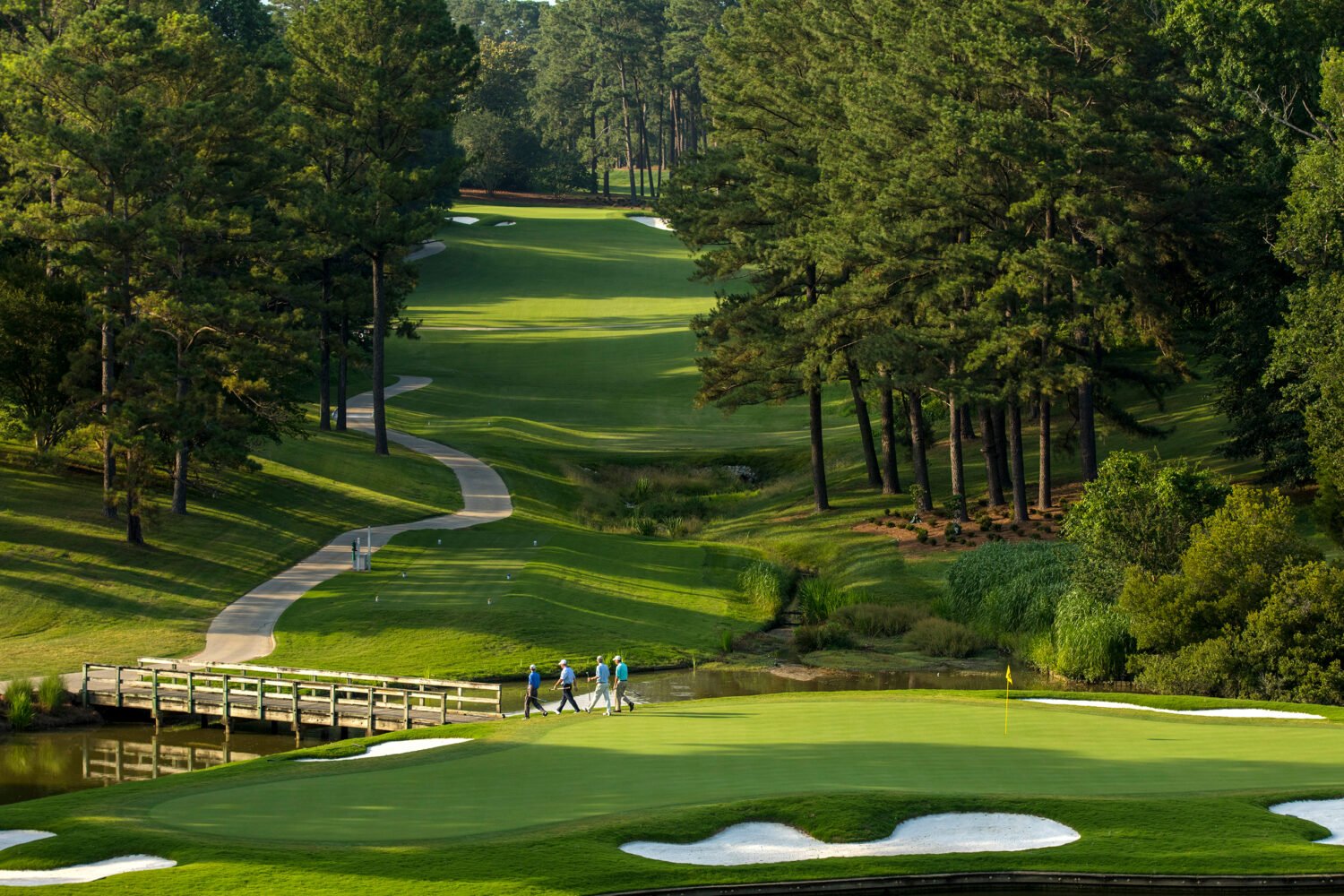Zen Golf. The Secret of Golf. The Golfer’s Mind. The Science of the Perfect Swing. Those are just a few of the many books about the sport. Perhaps A.A. Milne, author of Winnie-the-Pooh, summed it up best: “Golf is so popular simply because it is the best game in the world at which to be bad.”
A novice may be confused by all the choices of where to play: public and private courses, pitch-and-putts, par-3s. Not to mention the fundamentals—all those different clubs (driver or sand wedge?), the scoring system (par, eagle, or double bogey?), and simply how to hit the ball.
We asked several of the area’s top instructors about the best ways to get started. They insist it’s easier than you think.
Erika Larkin, The Club at Creighton Farms
Growing up in Queens, Larkin didn’t seem destined to be a golfer, let alone a nationally ranked trainer. For her, the closest thing to a course was five subway stops from her family’s apartment near LaGuardia Airport. That’s where Larkin and her parents stumbled upon a small course in Flushing Meadows when she was eight years old.
“It became an adventure for all of us, and I was fascinated with the game,” says Larkin, 36.
Self-taught until age 13, she landed a golf scholarship at James Madison University. After graduating in 2002, Larkin began to teach, and she’s now director of instruction at the Club at Creighton Farms in Aldie, Virginia. Although the club is private, nonmembers can set up lessons by contacting her directly via erikalarkin.com.
Larkin’s top tip for beginning golfers: Don’t swing too hard. “New golfers often try to overpower the ball. But a solid golf swing is fluid. It’s more finesse, using momentum instead of muscle to put the ball in flight.”
Shane Colegrove, East Potomac Golf Course
Last summer, a businessman called East Potomac in a panic. He had been invited to play Congressional Country Club in Bethesda, perhaps the area’s top course, with his boss. The problem was he hadn’t picked up a club in years.
“We had him in for an hour of instruction one afternoon and two hours the next. He wasn’t going to be low score, but he wasn’t going to embarrass himself, either,” says Shane Colegrove, 32, assistant general manager at the public East Potomac Golf Course in the District (202-554-7660).
A graduate of George Washington University law school, Colegrove has seen interest in the game grow in recent years. “In a place like DC, golf can be an important part of one’s career,” he says.
Colegrove’s top tip for beginners: Don’t buy expensive clubs right away. “We have plenty of stuff we can loan you. Use those and wait until you see what equipment best suits your game and your budget.”
Steve Loesher, Reston National Golf Course
As regional director of player development at Reston National, Loesher, 55, tries to make novices feel comfortable right away. Loesher is used to working with fledgling golfers—he won the Middle Atlantic Section PGA Player Development Award last year, and he used to be head coach at George Mason University.
“Golf’s like starting anything new,” Loesher says. “People can be a bit fearful.”
That’s why Reston National (703-620-9333) offers group lessons—six hours of instruction, plus five rounds of golf, for $239—that are open to anyone. In addition, beginners get tours of the clubhouse as well as the course. Recommendations are made not just about how to hold a club but also about what clothes to wear and how to drive a golf cart.
“We go through a regular day—from the clubhouse to the tee,” Loesher says. “By going A to Z, you can better decide if golf’s the game for you.”
Loesher’s top tip for beginners: Ease into things, playing nine holes instead of 18 if that’s better for your schedule or comfort level.
Trillium Rose, Woodmont Country Club
Lessons—private or group—can help someone fully enjoy the sport, says Trillium Rose, 38, head director of instruction at Woodmont Country Club in Rockville.
Rose was considering a career in film production before a trip home to Warren, Vermont, put her back on the golf course when she was 22. The director of golf at Sugarbush, her old club, asked Rose to help out and she discovered “that I could help people improve their game. That’s when I decided it would be cool to infiltrate this mostly male-dominated world and see how far I could go.”
A common mistake that novices make is ruling out lessons at private clubs be-cause they aren’t members. Just as with Erika Larkin at Creighton Farms, Rose can be contacted directly (trose@woodmontcc.com).
“If you can, bring along a friend or family member,” she says. “You can learn together and automatically have a twosome for your first tee time.”
Rose’s top tip for beginners: Learn to hit the small shots. “Those are the ones where you just bring the club back to knee height. Get those down and the rest of your game will soon follow.”
Liz Cooper, Army Navy Country Club
Learning to be comfortable with the game can also help beginners avoid injury, says Liz Cooper, 35, the pro at Army Navy Country Club in Arlington (703-521-6800; Cooper can provide lessons to nonmembers who are introduced by a club member).
She’s especially aware of how an injury can affect a sports pursuit. Cooper swam at Duquesne University in Pittsburgh until a shoulder injury sidelined her.
While many people play golf pain-free, a sore back or a bum shoulder can happen to a new golfer trying to swing too hard or using poor mechanics, she says—especially because you’re using muscles, and twisting, in new ways.
Beginners need to remember that the only thing they can control in golf is their next shot. Hit a great drive down the middle of the fairway and your approach shot could sail off into a sand trap if your mind wanders. That’s why Cooper tells beginners to stay focused “on what’s going well on a given day and really enjoy that. Some days it might be your tee shots; the next time it could be your putting or short game.”
Cooper’s top tip for beginners: Remember that the only thing consistent about golf is its inconsistency.
What Do Lessons Cost?
At a private club, expect to pay $110 to $175 an hour for individual lessons. By comparison, lessons at East Potomac, a public course, start at $55 for a half hour, and the academy there offers six hours of group instruction (for a half dozen students) for $139.
Golf schools are another option for novices and experienced players alike. These usually offer a full day of instruction, sometimes at a destination vacation spot. In the Mid-Atlantic, North Carolina’s Pinehurst Golf Academy is highly rated.
This article appears in the April 2017 issue of Washingtonian.



















